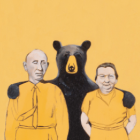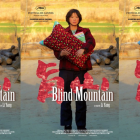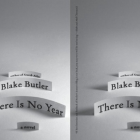From Bennington to Book Tour: A Life-of-Letters Q&A
Last weekend I had the privilege to travel up to Bennington College, where I spoke on a Life of Letters panel with friend (and fellow Ploughshares contributor/guest blogger) Megan Mayhew Bergman. Megan and I are both alums of Bennington’s low-residency MFA program; I graduated in 2009, Megan in 2010. We sat down in the Symposium conference room (modeled after the U.N.) in the gorgeous new CAPA facility and talked with current students about our shared experience of publishing a story collection—Megan’s already out in the world, mine still on the way. Our hope was that the conversation would be both encouraging and instructive. I’m happy to share the highlights of our talk with Ploughshares readers!
How did you get started publishing in literary journals?
JQ: When I graduated with my MFA, I hadn’t published a single story. I didn’t even know how to go about the submission process. I would send a story to a journal and then wait to hear back, which sometimes took months. It was only after talking to Megan, who encouraged me to devote more time to sending out work, that I finally set aside an entire day to mass-submit. I took six of my finished pieces and put them in pairs based on style (experimental, traditional). I listed ten journals beneath each title. This took a little research: it’s important to know the individual tastes of the magazines. Then I sent out sixty stories, making sure to note “simultaneous submission” on each cover letter. As soon as I’d get a rejection for a story, if there was an indication of interest (a signature from an editor, a “please try us again” notation on the slip), I’d immediately send the story I’d paired it with to the same journal. Of course, electronic submissions have made this process much easier.
MMB: It’s important to have a clean cover letter. Simple is best—don’t name drop (“Professor X loved this piece”), or try to summarize the story. The work should speak for itself. If you’ve never published anything before, say so. A good first cover letter might read something like: “Dear Mr. Smith, Enclosed is my story ‘Title.’ I’m currently an MFA candidate at [college]; this would be my first publication in a literary journal. Thank you for your consideration. Sincerely, &etc.”
What about rejection? Do you revise your work if it gets rejected multiple times?
MMB: Expect rejection. Learn to love it, to let it motivate you. Rejection letters, especially with personal notes from an editor, can be a great shot in the arm. I often revise stories that have been rejected multiple times.
JQ: I’ve learned that many rejections are about individual fit. For example, I sent a story featuring a corpse character to the Oxford American. An editor wrote to me and said: “I love this story, but you probably should have read our last issue.” Turns out they’d just published a story with a corpse character.
How did you get an agent?
MMB: I began to get a certain amount of momentum my last term at Bennington. I’d placed in a few fiction contests, and a few of my professors kindly passed along my work to their agents, all of whom I thought were fantastic and would have been honored to work with. I went with Julie Barer because I thought she was most passionate about my work, and we had an easy rapport. She has put so much energy into making my work successful; I’m forever grateful.
JQ: Agents do read literary magazines, and will call writers they think have potential. I received a number of calls once I had a few pieces published, but I initially resisted the agent thing, because a) I didn’t have a finished manuscript, and b) I thought I needed a novel-in-progress. But a friend of mine, John McElwee, had just started working as an assistant to Anna Stein at Aitken Alexander Associates, and he literally kept pestering me to let him show her my work. I finally gave in, and she wrote to ask to see more. Anna and I ended up having a phone conversation and we got along instantly. She was specific about why she liked my work, and she was willing to go out with a story collection alone, without an accompanying novel. She also edited one of my stories and her edits were razor-smart and exactly right, so I knew it was a fit.
Can you describe the process of selling a manuscript?
MMB: My agent and I worked on the manuscript for six months. When we both felt it was ready, Julie sent it to ten different editors. We ended up with several offers, so the collection went to auction.
JQ: My story is similar. Only I didn’t know what an auction was, so when Anna said the book was going to auction, I was bummed. I thought it was like what happens to houses no one wants to buy.
Okay, what IS an auction?
JQ: Here’s my very rudimentary understanding of how it worked: 1) my agent established the auction “rules” and set a date/time for opening bids on the advance; 2) interested houses had to submit opening bids by the specified time; 3) my agent communicated with all bidding parties throughout the day (I purposely stayed off-grid & spent the day wandering the woods at the MacDowell Colony), giving each house a chance to outbid the others; 4) one house finally “won.” However, my agent had established up front that we didn’t necessarily have to accept the highest bidder…
MMB: Same here. So the decision ultimately involved looking at a number of other aspects of the contract, some of them tangible, like hardcover vs. soft and publication timing, some of them intangibles, like editing styles and fit with the house overall.
What happens after you sell a book?
MMB: Nothing, and then everything. For me there was a short period of silence, as details were finalized, and then we jumped into editing. I worked with my editor to make multiple substantive passes through the entire book. Then we moved onto copyedits and planning for the launch. I was eight weeks pregnant with my second child when the book sold, so things got interesting. I approved a set of edits in the hospital.
JQ: Same for me—all this insane energy during the sale, then sudden radio silence while my agent worked behind the scenes, negotiating terms. Then came the exciting day when my contracts arrived! I bought a special pen to sign with. And then another long silence before I got my edits. My editor and I actually did most of our work via telephone, going over various changes. My editor, Elisabeth Schmitz, is highly collaborative in her approach.
Did you get to have any say in your cover design?
MMB: Yes. I mentioned that I wanted a jewel tone cover, and Scribner delivered beautifully (I have had such a fantastic experience with my publisher). When I got my cover art, I showed it to a few trusted friends and booksellers, asking them: Would you buy this book? Would you turn this book face out on a shelf? I did freak out, momentarily, after the Portlandia Put-A-Bird-On-It skit came out (which I loved, and agreed with). We’d already approved the cover art, but I panicked that no one would want to buy a book with a bird on the cover. At least it’s a real bird, drawn in the 1700s by Eleazar Albin, and not a generic bird. And I’m a certified bird dork.
JQ: I’m actually in the middle of the cover design process as we speak. Grove, too, has been wonderful about letting me be involved. We’re talking to a particular artist right now about doing the cover design, and I’ll be ecstatic if it works out.
How did you prepare for the book’s release?
MMB: Upping my running mileage. I also re-worked my website, made personal connections with bookstores I admired, sent galleys, and, um, had a baby.
JQ: Again, I’m sort of in the middle of this right now. I plan to rework my website once we’ve settled on a cover. And I’m going to take your advice about making personal connections with bookstores and booksellers. I am not going to have a baby. And oh, I wish I could up my running mileage! I’m still recovering from my last stress fracture and have only just started back running.
One thing I try to do at least once every day: look at my children and tell myself, Jamie, they are your first, best, and most important story collection.
What are your feelings about self-promotion via things like Twitter, Facebook, etc?
MMB: I believe some authors can get away with not using social media, but I’m not one of them. And I like it. At first I was very resistant to Twitter, but I have invested myself in being “real” there, and have made some good friends and relationships. Self-promotion is awkward and trying, and yet necessary. I think most people understand that authors have to hustle more than ever, and the reception is largely kind. I try to be aware of where my ego is at all times, and to stay genuine and honest in my presentation of myself and my work. My life is not always pretty; there’s a lot of baby vomit and dog poop.
JQ: I actually wrote about this at the Ploughshares blog, in a piece called Why I’m Not On Twitter Yet. The one-sentence version: I have an addictive and compulsive personality, four kids to raise, and a novel to write, so I’ve opted to not add Twitter to my roster. For now. But I love Facebook, probably too much.
Can you talk about reviews? What’s it like to read a review of your own work?
MMB: I think criticism is necessary and important. I write it myself and have taught a class on it at Bennington; I think it’s a wonderful perspective people of letters can offer: how might others read or enjoy this book? What did the author attempt, and did he or she accomplish it? There is nothing more flattering to me than having someone engage seriously with my work, even though the results can be painful. I have never read anything so fast as some of my reviews, and I am grateful to each person who took the time to read and comment on my work.
The most difficult part of digesting criticism is when you feel someone has misunderstood you, or is not offering a thoughtful critique. Some days I just have to look away, and not allow myself on Goodreads or Amazon. It’s such a temptation to read everything, to feel inflated by the good and deflated by the bad. I’m glad people are commenting on my work, but it’s not always helpful for me to consume it all.
JQ: I haven’t been reviewed yet, so I can’t speak to this one. I imagine I’ll be like you, though—I’ll probably be tempted to Google myself constantly to see what folks are saying.
What has been your favorite part of the publication experience? Least favorite?
MMB: My favorite part is easy—the letters and emails from people I don’t know who have been moved by my work. Nothing—NOTHING—is better than those. My least favorite part is the self-promotion. I love giving readings and lectures. I don’t love hitting the world over the head with the Megan show, begging contacts to come to my readings, tweeting my reviews, spending time away from my children. But I’ve learned a lot this first time out, and feel grateful for the generous reviews, the invitations to read, anyone’s purchase of my book. One night, driving home from the Albany train station at 4 AM after a book event, lost, I kept saying to myself: living the dream. But I really am, I think.
JQ: My least favorite part has been asking for blurbs. And my favorite part is the same as yours: hearing from people who were in some way touched by my work. The first time it happened was at Bennington, after I gave my graduate reading. A woman named Sharon (who I’ve still never met) wrote me a letter and put it in my student mailbox. Sharon had been moved by my story and told me so. And then she wrote: “Please publish a collection of stories so I can read it. P.S., this is my first fan letter.” I’ve looked at that letter almost every day since. Sharon, if you’re reading this—thank you.
Megan’s bio: Megan Mayhew Bergman lives in Vermont with her veterinarian husband, two children, and a heap of animals. Scribner published her collection, Birds of a Lesser Paradise, which was a Barnes and Noble Discover, Amazon, Oprah, and Indie Next pick for March 2012. Her novel Shepherd, Wolf is forthcoming from Scribner. Megan is a justice of the peace, occasionally teaches literature at Bennington College, and will be a fellow at Breadloaf this summer.
(Photo from Megan’s website.)



